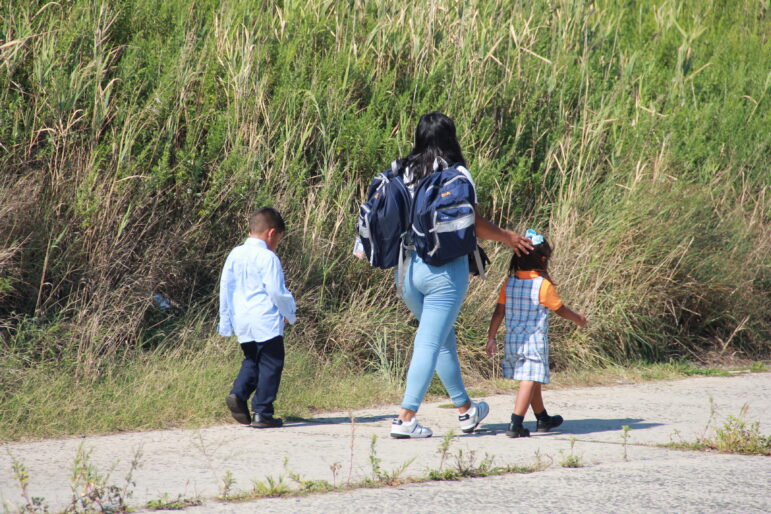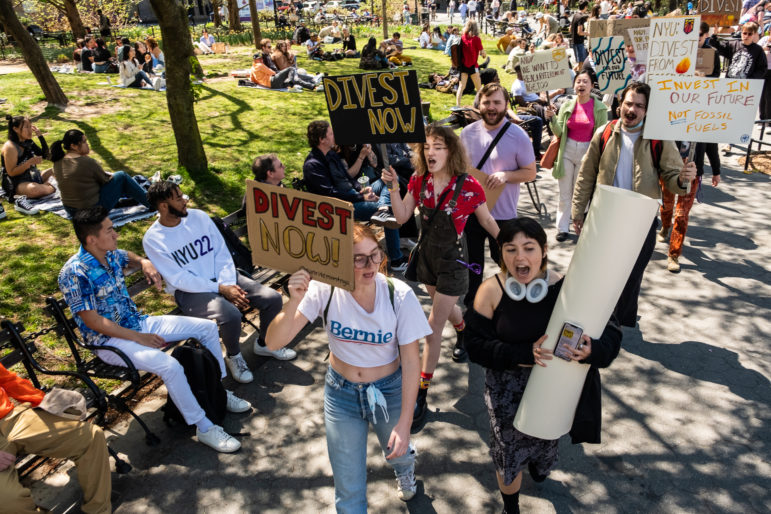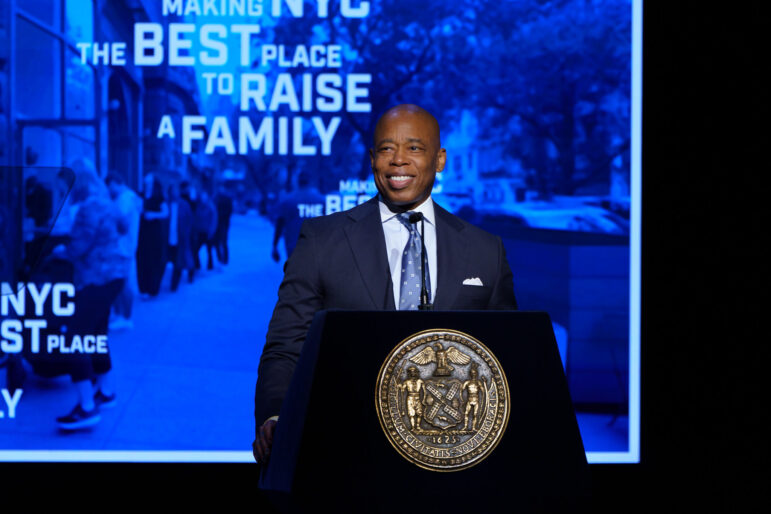To take a people’s land, to destroy their homes, flatten their neighborhoods, annex what is theirs and use it to benefit yourself and your own kind, you must invent a vocabulary.
First, define the problem. Don’t call the place a neighborhood. That suggests families sitting down over steaming platters of food, children hopscotching along familiar sidewalks, intricate networks of relations and institutions that nurture and uplift. Call it a slum. It’s an ugly word, one that calls to mind dirt, decay, violence, fear. If someone says that word is too judgmental, soften your language. Call it a “blighted area.” Who would object to erasing blight? And before you unleash the powers of eminent domain, before you call out the bulldozers and summon public officials eager to turn over ceremonial spadefuls of earth, you need a hopeful, compassionate phrase that justifies and whitewashes the whole enterprise: urban renewal.
Between 1949 and 1973, the U.S. government’s program of urban renewal bulldozed 2,500 neighborhoods in 993 cities. One million people were dispossessed and many millions more had their lives, neighborhoods and economic fortunes altered by this massive program of social and geographic engineering. The targets were ethnic and racial enclaves that lacked the power or pedigree to stop the bulldozers. Urban renewal was mostly “Negro removal,” an effort to push black residents from city centers and appropriate the land for other uses. As many as 1,600 black neighborhoods fell victim.
The decisions were made by the federal government and many allies: state and city politicos and bureaucrats, industrialists and bankers and developers, newspaper publishers and municipal planners. In the name of progress, they knocked down homes and destroyed business districts where small grocers and jazz clubs flourished. In their place, they built expressways and coliseums and high-rises, or simply allowed the space to lie fallow, creating urban prairies that still exist.
They didn’t replace much of what they razed. By mid-1967, the effort had demolished 400,000 residential units but built only 10,760 low-rent public housing units on these urban renewal sites–knocking down nearly 40 homes for every one put up. Additional public housing was erected elsewhere, but often bunched into segregated areas that were physically isolated from the flow of city life and amenities.
There’s more to the story, however, than bricks and mortar. In her new book, Root Shock: How Tearing Up City Neighborhoods Hurts America, and What We Can Do About It, Columbia University psychiatrist Mindy Thompson Fullilove confronts the toll of urban renewal in human terms. What happens, she asks, when people are uprooted not just from the structures where they live and shop and work, but from friends, schools and churches, from neighbors always ready to baby-sit or help jump-start a stalled car? Black communities were knitted together by bonds of worship, commerce and familiarity in ways that provided mutual aid and safety, a cushion against the tribulations of poverty and racism.
Urban renewal, Fullilove argues, ruptured these bonds and left black America with little protection against the assaults that came in ensuing decades: the flight of unskilled jobs, the influx of drugs, the slow collapse of families and the hurts brought by AIDS, asthma and violence. “Each disaster,” she writes, “increased the impact of the next, and the spiral of community disintegration began to spin faster and faster, just as the last domino seems to fall much more quickly than the first. The present state of Black America is in no small measure the result of ‘Negro removal.'”
Fullilove isn’t the first to describe the morbid effects of tearing up minority communities. Epidemiologists Deborah and Rodrick Wallace did something similar in A Plague on Your Houses, published five years ago. They examined the 1970s burn-out of the South Bronx and other New York City neighborhoods after the city selectively decreased fire-department services to poor, minority areas. As a result, whole communities went up in flames, and people fled by the hundreds of thousands. The Wallaces used statistics to document the ensuing public-health disaster: huge increases in tuberculosis, alcoholism, drug abuse and AIDS among the refugees.
Now, Fullilove looks at the psychic damage. She defines “root shock” as “the traumatic stress reaction to the destruction of all or part of one’s emotional ecosystem.” She focuses her analysis on Pittsburgh, Roanoke, Virginia, and Newark, New Jersey, but the lessons she learned apply to New York or any other city. She draws on the experiences of people like David Jenkins, a homeless man in New York who grew up in Elmwood, a semirural section of Philadelphia near the Delaware River wetlands.
Elmwood was consumed by a 2,500-acre urban renewal project, one of the biggest in America. David was 11. Often he’d run back and sit by his old house and cry. He recalls the funerals that followed the uprooting: old folks who, he believes, simply gave up after their worlds had been shattered. “They couldn’t do anything, their hands were tied, they didn’t have no city, they didn’t have no pull,” he says. “They died. They couldn’t handle it.”
Root Shock may frustrate those looking for hard data and tidy lists of solutions. It’s an impressionistic work that, at times, meanders in its search for metaphors and examples. But it’s important and captivating because it offers new ways of thinking about community and displacement–and about how we can reframe the debate and take back our cities from the ghosts of the bulldozers.
Too often, journalists and activists try to address cities’ problems with little understanding of how urban renewal altered landscapes and lives. One of the few journalists to take an in-depth look at urban renewal was Mary Bishop, a former colleague of mine at The Roanoke Times. In 1991, she attended a reunion for an extinct neighborhood; all the homes had been knocked down to make way for an interstate, a civic center and other big, ugly projects. The routine newspaper assignment inspired Bishop to spend years unearthing the block-by-block story of urban renewal in Roanoke. Between 1955 and the 1980s, she found, Roanoke demolished 1,600 homes, 200 businesses and 24 churches. In the city’s urban renewal zone, people watched in slow-motion horror as the government-nurtured cycle of decay progressed. People assumed–rightly or wrongly–that their homes would be condemned. So they stopped putting money into fixing them. This degraded property values and left houses vulnerable to wind, water and, especially, fire. One house burned, then another, and decline and despair accelerated, providing authorities a self-fulfilling justification for expanding their program of condemnation and clearing.
Displaced people can suffer deep emotional scars, wounds made worse by the chorus telling them it was done for their own good. Until the wrongs are acknowledged–until apologies are made and angers vented–people and neighborhoods won’t be able to heal and rebuild. Healing a group’s psyche, Fullilove believes, can only come through “a collective process that requires organizing ways in which people come together to learn facts, share ideas, raise questions and search for solutions.”
In the late 1990s, she helped residents of Pittsburgh’s Hill District resist a new round of urban renewal. Authorities planned to bulldoze two “distressed” housing projects, an initiative sure to disperse many families and, in Fullilove’s view, driven by designs and ideas “identical to the plans and processes of urban renewal 40 years before.” To make the problems worse, some of the people who were losing their homes were those who had first moved to the projects as a result of the destruction of the Lower Hill. Fullilove asked residents to “remember and preserve all the good that had happened in those buildings.” She and other agitators held teach-ins, mapped the neighborhoods and recast the debate. They objected to the “distressed” designation, seeing it as a term that stigmatized residents while absolving those who had done a poor job of managing the housing projects.
One resident told Fullilove, “The developers tell us not to be sentimental about where we live.”
Fullilove shot back, “But of course you should be sentimental about where you live–it’s your home!”
Media began to scrutinize the demolition plans. Community views gained a public airing. One housing project was razed, but the other was saved.
There is hope, and it begins with the stubbornness and creativity of those who have suffered great losses. Root Shock is vital reading most of all because it honors the sparks of real renewal in America’s cities–the defiant spirit of the residents of Pittsburgh’s Hill District, the joy of displaced people reclaiming their pride and their memories. “In that process of making something out of our grief,” Fullilove writes, “we stop that part of the downward spiral which is propelled by the weight of unshed tears.” •
Michael Hudson is a staff writer with The Roanoke (Virginia) Times and investigative editor at Southern Exposure magazine.








